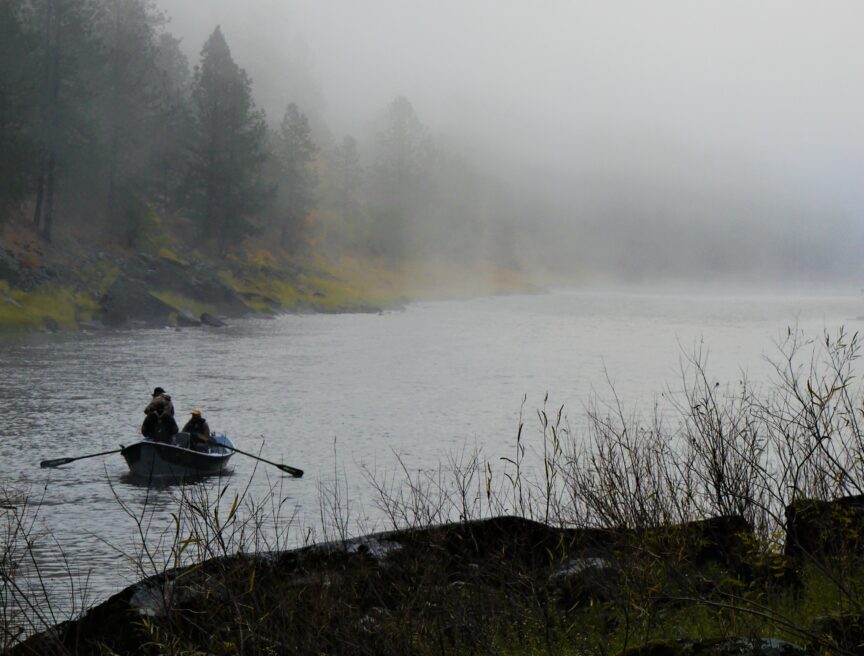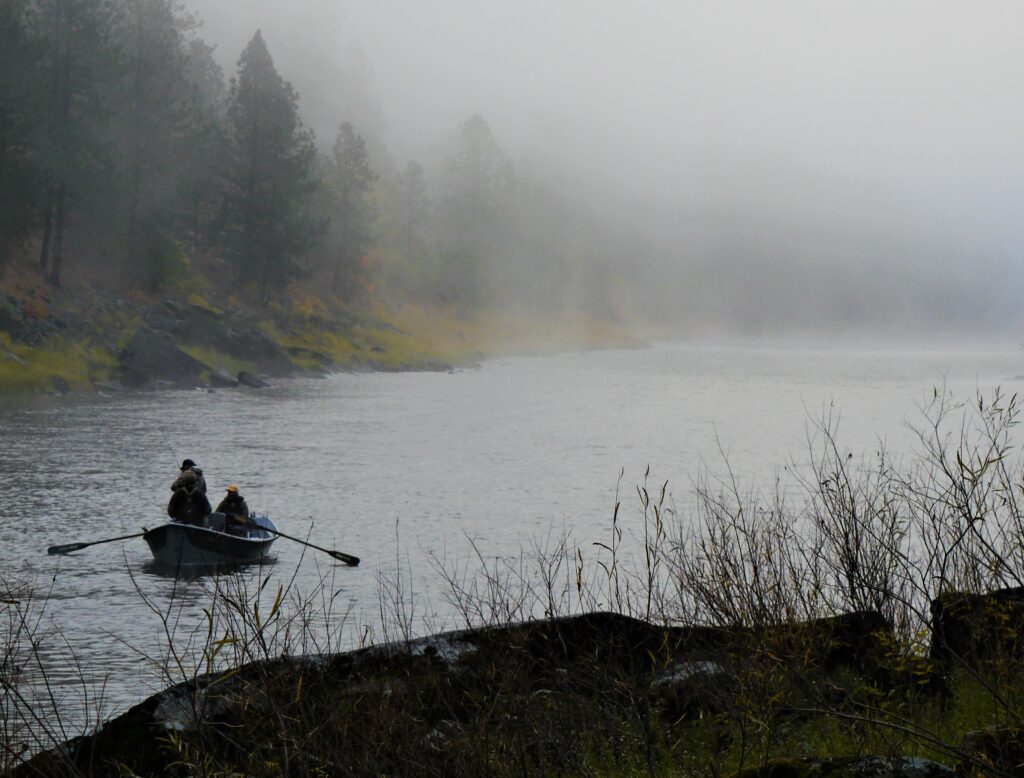
Over the last 25 years, I’ve seen all sorts of conflict in my outdoor pursuits. Whether you are an archery hunter or a rifle hunter, a gear guy or fly gal, a power boater or drifter, never mind those poor wade anglers—if I’ve learned one thing it’s that we as sportsman don’t have time to get stuck in the muck of conflict between users of the resource—we need to be at the same table, doing what is best for fish and wildlife regardless of our individual preferences.
That’s why the Clearwater River Fisheries Working Group was formed by the Idaho Department of Fish and Game. The goal of this advisory group is to develop proposals describing seasons and limits for fall Chinook salmon and steelhead fisheries on Idaho’s famed Clearwater River and its tributaries. Essentially, the Clearwater fisheries work group is intended both to help create more equity and opportunity for all anglers.
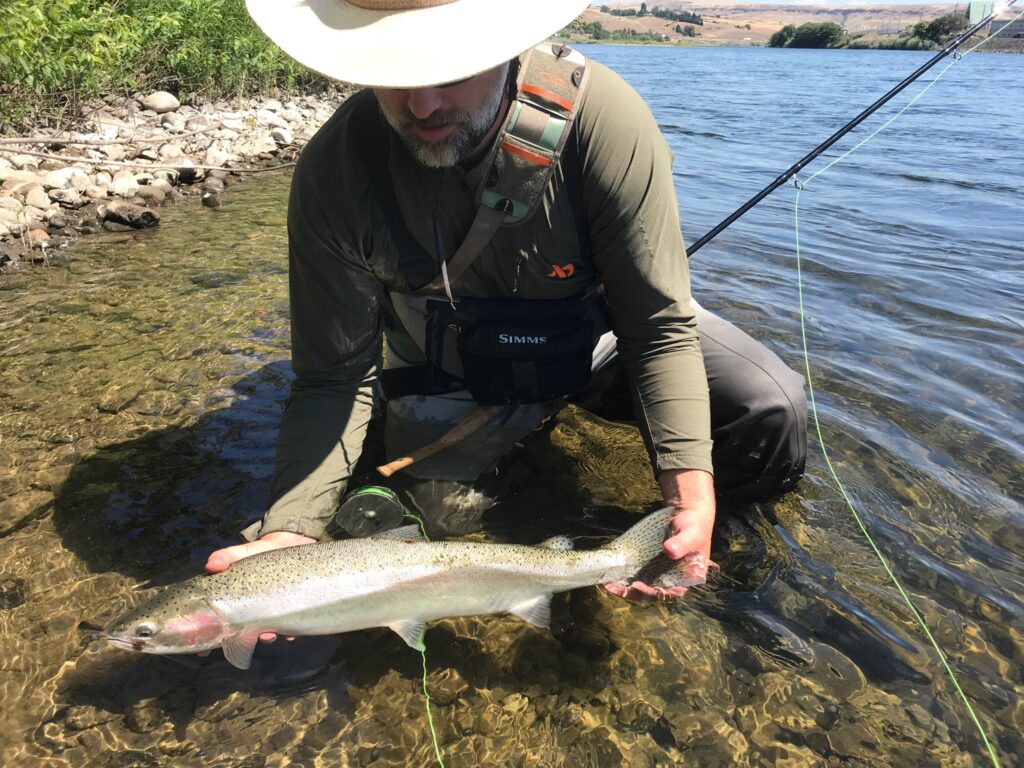
Image: Josh Mills.
The group’s thirteen members represent fly anglers, gear anglers, Chinook anglers, steelhead anglers, guides and outfitters, retail businesses and, through a representative of Trout Unlimited and Wild Steelheaders United, conservation interests.
The Clearwater River has seen its fair share of low points over the last five years, from depressed steelhead runs to spring/summer Chinook runs that underwhelm the communities reliant on these runs for their economies. But there is one shining bit of good news on this river: the status of fall-run Chinook.
Likely due to a variance in life history, fall Chinook returns have been good over the last few years in the Snake River basin, specifically those to the Clearwater River. They have been good enough, in fact, that the retention of on unclipped fall Chinook is allowed, as well as two clipped fish for a total of three in your daily bag.
With higher salmon and steelhead returns come increased opportunity. Most anglers would celebrate any such increase in fishing opportunity. But in this instance that is not the case.
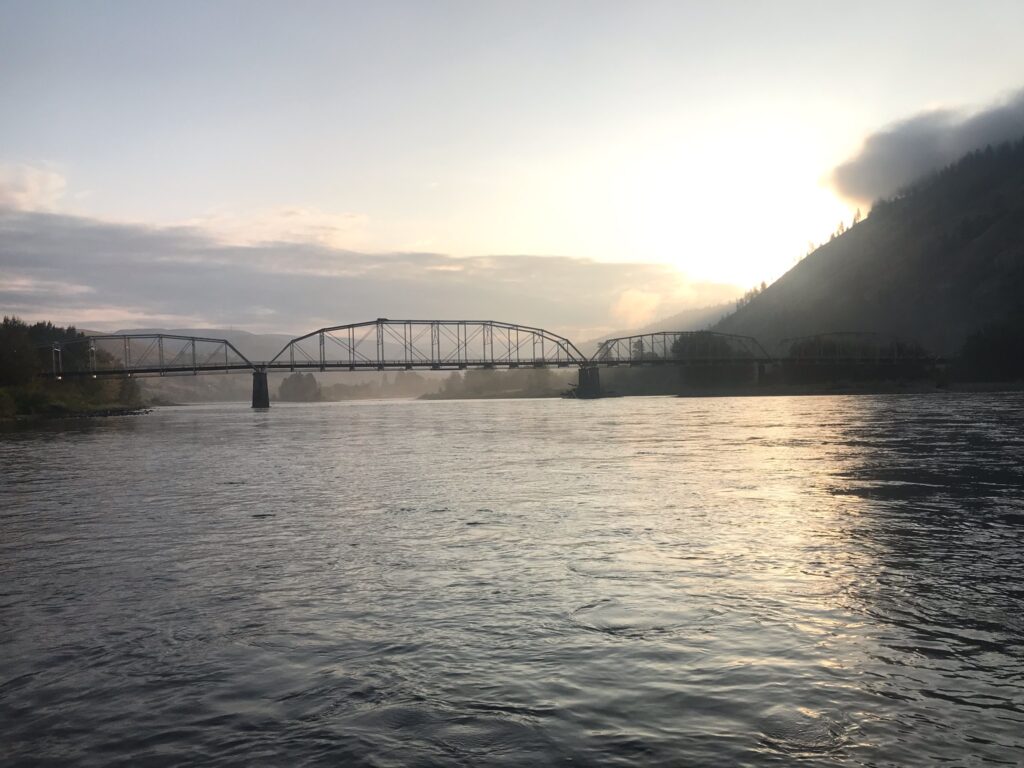
Image: Josh Mills.
Traditionally, the fall chinook fishery on the Clearwater has been limited to the lower portion of the river, below Memorial Bridge. In 2018 the Idaho Department of Fish and Game allowed for an experimental fall Chinook fishery above Memorial Bridge on the river, albeit only Thursday-Sunday.
The experimental fishery caused an outcry from some anglers who feared it would ruin the catch and release steelhead fishery on the river. And so the conflict began.
Since 1974 there has been a catch and release steelhead fishery on the Clearwater River. In mid-October the river is opened for catch and keep on adipose clipped steelhead. This initial closure for keep was in response to diminishing runs, coinciding with the construction of the four lower Snake River dams.
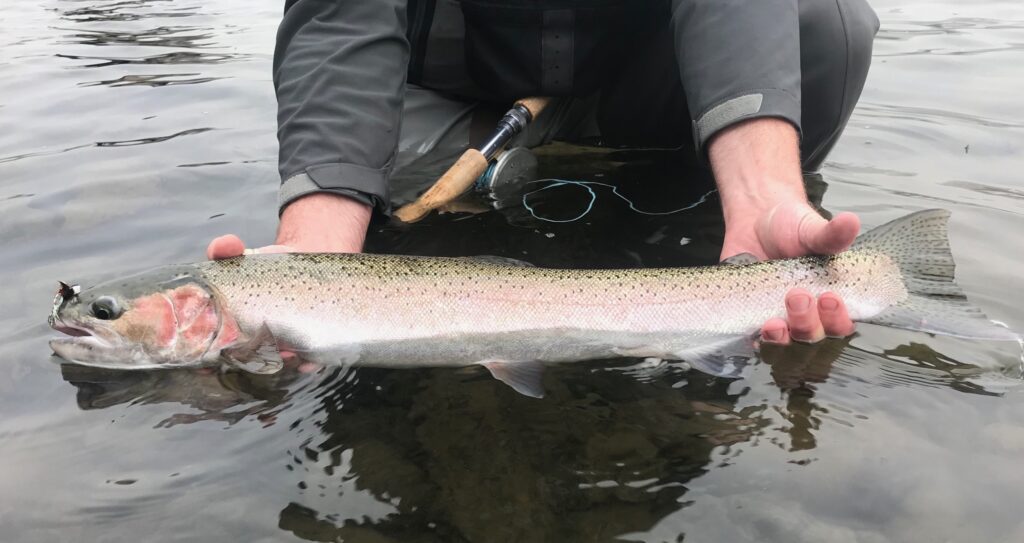
Image: Josh Mills.
Since that time the steelhead fishery has rebounded, but only as a result of increased hatchery production in the drainage. And for decades the fishery has remained in place largely due to a social desire rather than a biological need (management of fish and wildlife is based on four factors: biological, social, economic and political).
In recent years the popularity of the steelhead catch and release season on the Clearwater has grown. With more catch and release anglers on the water during late September and early October you may see an overlap of pressure for both species, fall Chinook and steelhead.
However, we know from monitoring data on through run timing, the bulk of Idaho-bound steelhead don’t cross Lower Granite dam until September 30th and October 9th respectively (this phenomenon is likely due to mixed stocks, one being the Salmon and Snake River and other the Clearwater River). Conversely, the peak of the fall Chinook count is between Sept.15th-24th.
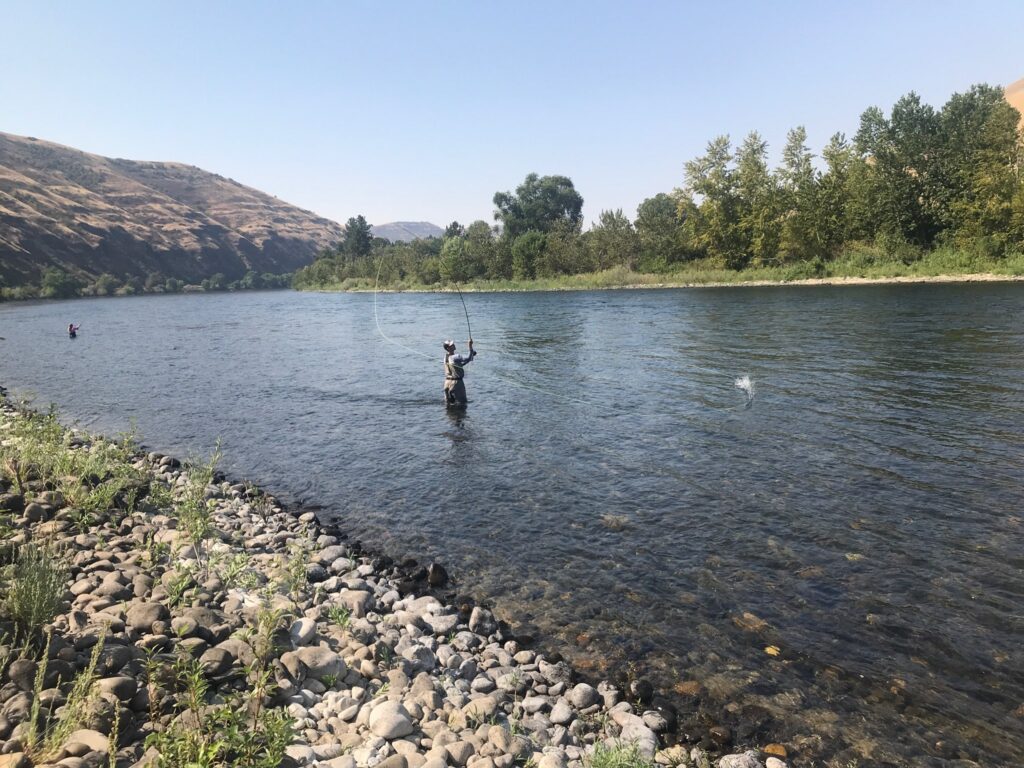
Image: Josh Mills.
In the coming months members of the Working Group will offer recommendations for the entire group to review—these recommendations may be developed into proposed regulation changes and submitted to the Idaho Fish and Game Commission for consideration. For Trout Unlimited and Wild Steelheaders United, fisheries management comes down to what is best for the fish. Without durable wild fish runs, we will become ever more reliant on expensive hatchery-based options that have adverse impacts ecologically.
That’s why as the Wild Steelheaders United representative on the Clearwater fisheries work group, I will advocate strongly for an emphasis on regulations that support angling opportunity consistent with improving wild runs of Chinook and steelhead.
Learn more about the Clearwater River Fisheries Working Group.


